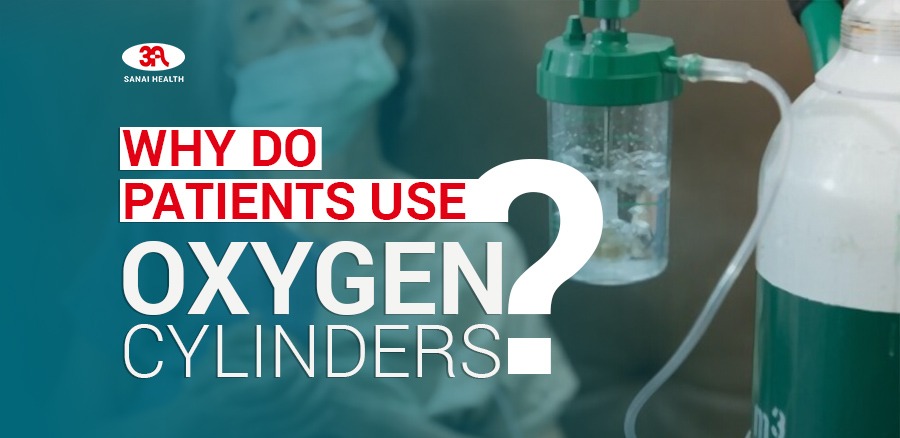Why do People Still Use Oxygen Cylinders for Oxygen Therapy?
What is Oxygen Therapy?
In its most basic form oxygen therapy is the administration of oxygen gas to a patient who is suffering from hypoxemia caused by a number of health conditions. The patient is unable to maintain blood oxygen level above 92% SpO2 and their carbon levels in blood are also increasing over time in such conditions. You will find oxygen therapy being administered to people with pulmonary health problems like COPD, pneumonia, COVID-19 and patients with cardiac conditions and end stage cancer.
Oxygen concentrators and oxygen cylinders are routinely used in order to improve the quality of life of the patients. The administration of oxygen therapy differs as per the clinical condition of the patient. Following are some of the types of oxygen therapies that are commonly prescribed.
Types of Oxygen Therapies
- Short Term Oxygen Therapy: This oxygen therapy basically leads to oxygen cylinder or oxygen generator use for 2 months following a stay at the hospital for acute hypoxemia.
- Long Term Oxygen Therapy: For patients who are unable to maintain SpO2 more than 88-92% on their own during their daily routine. This oxygen therapy requires use of oxygen tank for more than 15 hours.
- Nocturnal Oxygen Therapy: When a patient is unable to maintain their oxygen levels in normal ranges during the night due to sleep apnea or difficulty in breathing, they are prescribed this therapy.
- Ambulatory Oxygen Therapy: The purpose of this oxygen therapy is merely improving the quality of life of the patient with difficulty in breathing when they move around. The patient can consequently move around their home, go out and exercise. They can maintain their social life easily. The just need to carry around a portable oxygen concentrator or a small sized oxygen cylinder with them.
- Palliative Oxygen Therapy: Mainly given to patients to ease breathing while they suffer through end stage of their disease.
Oxygen Cylinders as the Main Source of Supplemental Oxygen
Why are Oxygen Cylinders Favored by Some?
- Different Needs of the Patient: Oxygen cylinders are typically favored by the people who don’t need to utilize oxygen for longer periods of time. The patients who favor oxygen cylinders over medical oxygen concentrators are the ones who require 2-3 hours of oxygen use.
- Low Cost of Refills: When you look at the cost of refilling, it is minimal when you compare it to that of an oxygen concentrator of good quality. Oxygen cylinders only need to be refilled after 3 to 4 days if you’ve consumed the oxygen.
- Lack of Need For Electricity Source: The biggest point in favor of oxygen cylinder use instead of oxygen concentrator device use is its ability to work without electricity.
Issues that come with using Oxygen Tanks
Limited amount of Oxygen:
The amount of oxygen that the oxygen cylinders can carry is less than what an oxygen concentrator can provide you on a daily basis. The limited amount of oxygen makes it necessary to get refills every 2 to 4 days. Users can utilize this option for lesser amount of time. If you are someone who needs Long Term Oxygen Therapy, this might not be the best option for you. You will have to send your oxygen cylinder for refill or will need to ask for delivery of oxygen gas.
Ability to Move Around:
When you use an oxygen cylinder, you have to accept that you won’t be able to carry the thing around as easily as an oxygen concentrator. The portable oxygen concentrators come in smaller sizes and are easy to carry. Whereas the oxygen cylinders are best for home use or hospital use. You cannot carry the device around for your oxygen support. Airlines now allow portable oxygen concentrators onboard while making it impossible to take the oxygen cylinder with you onboard.
Multiple Oxygen Tanks are Necessary:
The limited amount of oxygen in the medical oxygen cylinders make it a requirement that you store more than one oxygen cylinder at your place. Note that the hospitals have many oxygen cylinders as a backup even during a surgery.
Storage of the Medical Oxygen Cylinders:
You will need to follow the directions on how to properly store the oxygen cylinders. They require cool and dry places for storage. They need to be properly positioned so that the oxygen inside them isn’t disturbed.
Careful Use:
One of the most important things that anyone with an oxygen cylinder knows by heart is that the device needs proper care. You need to be on the watch out for when the oxygen levels are falling down. Additionally you need to remember that these cylinders contain pure oxygen inside them and thus are susceptible to explosion and spontaneous bursting.
The Cost Adds Up:
While the cost of a single refill of oxygen cylinder is light on the pocket, over time you feel the strain on your pocket. The patient is bound to get refills as otherwise they will end up without oxygen at an inopportune time. Another part of the cost is the professional upkeep of the medical oxygen device.
What would you use: An Oxygen Concentrator or an Oxygen Cylinder?
It would be entirely unfair to discount the advantages of oxygen cylinder use. For all the negatives associated with the oxygen cylinders, it is ultimately the best option for people who need oxygen therapy for short amount of time. For a more permanent oxygen therapy partner, it is better to look into getting a home oxygen generator device or a portable oxygen concentrator.

